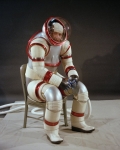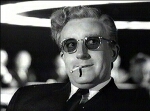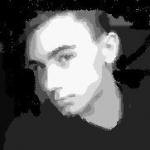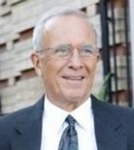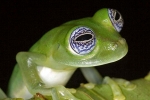*** Mars Given OK On Positional Sleep Apnea Therapy ***
Re: *** Mars Given OK On Positional Sleep Apnea Therapy ***
Mars
With your cervical support pillow, I'm just wondering why you went with the one you linked to, rather than what looks to be an apnea desigend pillow on the same site?
http://www.the-pillow.com.au/more/sleep ... pillow.php
With your cervical support pillow, I'm just wondering why you went with the one you linked to, rather than what looks to be an apnea desigend pillow on the same site?
http://www.the-pillow.com.au/more/sleep ... pillow.php
_________________
| Mask: TAP PAP Nasal Pillow CPAP Mask with Improved Stability Mouthpiece |
| Additional Comments: Software: Sleepyhead |
Re: *** Mars Given OK On Positional Sleep Apnea Therapy ***
Some lab will do this so you don't "mess up the wiring". Others will do it to help you "qualify" for CPAP.drdrew wrote:i remember in the sleep study the kept on having to put me on my back for testing.
The practice sucks, either way.
There are so many cheap video cams that there is no excuse not to buy them and video yourself. You should run some kind of timecode, either burned in, or show a digital display clock in the frame.drdrew wrote:at home i have now gone down to straight cpap. right around 6-8 pressure, NO CENTRALS. i read my data weekly and i can see clusters on occasional nights where i must turn onto my back for 30 minutes, the pressure spikes up, i have a bunch of OSA events, and usually the mask starts leaking and it wakes me up!
No need to pay for the cam, just buy it at a big store (i.e., best buy) that allows 30 day money back returns.
Sleep on the very edge of your bed.drdrew wrote:i would be interested in more comfortable alternatives to the tennis ball...like a wedge...i will follow your threads.
If you roll over, you will fall out of bed.
Have pillows on the floor to break your fall.
I found (purely by accident) that doing this will train your unconscious mind to keep you from turning on your back when you sleep.
Of course, if, during your fall you hit something that's hard, try not to hit it with your head, goes without saying.
.
It is easy to be brave from a safe distance - Aesop
.
It is easy to be brave from a safe distance - Aesop
.
Re: *** Mars Given OK On Positional Sleep Apnea Therapy ***
Gerald? wrote:Mars
With your cervical support pillow, I'm just wondering why you went with the one you linked to, rather than what looks to be an apnea desigend pillow on the same site?
http://www.the-pillow.com.au/more/sleep ... pillow.php
Hi Gerald
Many thanks for the link
I got my original pillow, wedges and collar from a couple of shops near me. The Sleep Apnea Pillow was not mentioned.
I started getting links to the original manufacturer of my stuff only when I started posting, and I admit I did not see the Sleep Apnea Pillow. From looking at the brochures I got at the time the Sleep Apnea Pillow is not mentioned, so I suspect it is a new product.
It certainly looks perfect for the job
Fortunately for me, the pillow I got, with the removable inserts, also does the job, and can be used as a normal pillow as well. So that was lucky for me.
Personally, I would recommend using the cervical collar until one got used to the "head back" position, and with the collar I use a feather pillow. Then if you wanted to go further either the Sleep Apnea Pillow or the Complete Sleeprrr Memory Foam Plus Pillow would do the job.
It is great to have input on this, as I suspect that we, the patients, are moving ahead faster than the professionals. Thank you for sharing that Gerald, much appreciated
Mars
for an an easier, cheaper and travel-easy sleep apnea treatment 
http://www.cpaptalk.com/viewtopic/t7020 ... rapy-.html
http://www.cpaptalk.com/viewtopic/t7020 ... rapy-.html
Re: *** Mars Given OK On Positional Sleep Apnea Therapy ***
See also viewtopic.php?f=1&t=71153
So Well
"The two enemies of the people are criminals and the government, so let us tie the second down with the chains of the Constitution so the second will not become the legalized version of the first." - Thomas Jefferson
"The two enemies of the people are criminals and the government, so let us tie the second down with the chains of the Constitution so the second will not become the legalized version of the first." - Thomas Jefferson
Re: *** Mars Given OK On Positional Sleep Apnea Therapy ***
MORE ON SUCCESSFUL POSITIONAL SLEEP APNEA THERAPY
http://www.ncbi.nlm.nih.gov/pubmed/20572416
and the large print version
http://www.ncbi.nlm.nih.gov/pmc/articles/PMC2556917/
and the large print version
Mars
http://www.ncbi.nlm.nih.gov/pubmed/20572416
and the large print version
andJ Clin Sleep Med. 2010 Jun 15;6(3):238-43.
Comparison of positional therapy to CPAP in patients with positional obstructive sleep apnea.
Permut I, Diaz-Abad M, Chatila W, Crocetti J, Gaughan JP, D'Alonzo GE, Krachman SL.
Source
Temple University School of Medicine, Philadelphia, PA 19140, USA.
Abstract
STUDY OBJECTIVES:
We hypothesized that positional therapy would be equivalent to continuous positive airway pressure (CPAP) at normalizing the apnea-hypopnea index (AHI) in patients with positional obstructive sleep apnea (OSA).
METHODS:
Thirty-eight patients (25 men, 49 +/- 12 years of age, body mass index 31 +/- 5 kg/m2) with positional OSA (nonsupine AHI <5 events/h) identified on a baseline polysomnogram were studied. Patients were randomly assigned to a night with a positional device (PD) and a night on CPAP (10 +/- 3 cm H2O).
RESULTS:
Positional therapy was equivalent to CPAP at normalizing the AHI to less than 5 events per hour (92% and 97%, respectively [p = 0.16]). The AHI decreased from a median of 11 events per hour (interquartile range 9-15, range 6-26) to 2 (1-4, 0-8) and 0 events per hour (0-2, 0-7) with the PD and CPAP, respectively; the difference between treatments was significant (p < 0.001). The percentage of total sleep time in the supine position decreased from 40% (23%-67%, 7%-82%) to 0% (0%-0%, 0%-27%) with the PD (p < 0.001) but was unchanged with CPAP (51% [36%-69%, 0%-100%]). The lowest SaO2 increased with the PD and CPAP therapy, from 85% (83%-89%, 76%-93%) to 89% (86%-9%1, 78%-95%) and 89% (87%-91%, 81%-95%), respectively (p < 0.001). The total sleep time was unchanged with the PD, but decreased with CPAP, from 338 (303-374, 159-449) minutes to 334 (287-366, 194-397) and 319 (266-343, 170-386) minutes, respectively (p = 0.02). Sleep efficiency, spontaneous arousal index, and sleep architecture were unchanged with both therapies.
CONCLUSION:
Positional therapy is equivalent to CPAP at normalizing the AHI in patients with positional OSA, with similar effects on sleep quality and nocturnal oxygenation.
http://www.ncbi.nlm.nih.gov/pmc/articles/PMC2556917/
and the large print version
Personally I think that a soft cervical collar would be just as good as a chin-strap, and probably better as it keep the chin up.J Clin Sleep Med. 2007 December 15; 3(7): 729–730.
PMCID: PMC2556917
Copyright © 2007 American Academy of Sleep Medicine
Treatment of Severe Obstructive Sleep Apnea Syndrome with a Chinstrap
by Robert D. Vorona, M.D.,1 J. Catesby Ware, Ph.D.,1 John T. Sinacori, M.D.,2 Melvin L. Ford, III, D.D.S.,2 and J. Parker Cross, M.D.3
1Division of Sleep Medicine
2Department of Otolaryngology-Head and Neck Surgery
3Department of Otolaryngology; Eastern Virginia Medical School, Norfolk, VA
Address correspondence to: Robert Daniel Vorona, M.D., EVMS/SNGH Sleep Disorders Center, 600 Gresham Drive, Norfolk, VA 23507Phone: (757) 388-3322Fax: (757) 388-4190, ; Email: voronard@evms.edu
Received May 2007; Accepted September 2007.
Abstract
A chinstrap alone improved severe obstructive sleep apnea as well as or better than the use of CPAP.
Citation:
Vorona RD; Ware JC; Sinacori JT; Ford ML; Cross JP. Treatment of severe obstructive sleep apnea syndrome with a chinstrap. J Clin Sleep Med 2007;3(7):729–730.
Keywords: Obstructive sleep apnea syndrome, chinstrap, polysomnogram
Obstructive sleep apnea syndrome (OSAS) is common and associated with neurocognitive and cardiovascular complications including excessive daytime sleepiness, motor vehicle crashes,1 hypertension, organic heart disease, and stroke.2 Conservative treatment options include weight loss and minimization of alcohol intake. Other treatments include nasal continuous positive airway pressure (CPAP), dental appliances, and surgical interventions.3 We report on successful treatment of severe sleep apnea with the use of only a CPAP chinstrap.
CASE REPORT
A 75-year-old retired physician presented to the Eastern Virginia Medical School/Sentara Norfolk General Hospital Sleep Disorders Center with a chief complaint of morning headaches. He described early morning awakening with a diffuse and dull headache. Head of the bed elevation, as well as aspirin, a combination of aspirin, caffeine, and acetaminophen, and an ice pack frequently alleviated this discomfort. He also described snoring, nocturia, and daytime sleepiness, with an Epworth Sleepiness Scale score of 17/24.
Past medical history included hypertension, benign prostatic hypertrophy, and a transient right homonymous hemianopsia. He was extremely active, including participation in triathlons and hiking in Nepal.
Physical examination revealed an elderly fit gentleman with an irregular pulse of 60 beats per minute. Body mass index (BMI) was 24 kg/m2. The nasal exam revealed leftward septal deflection. He had good dentition with a borderline class 3 malocclusion, normal tongue, Mallampati 1, slightly high-arched hard palate, normal uvula, and no retrognathia.
Diagnostic polysomnography (PSG) was performed utilizing nasal pressure transducer, piezoelectric belts, oximetry, and intercostal EMG for respiratory monitoring.
We defined obstructive, mixed, and central apneas in the conventional fashion; we defined hypopneas as demonstrating ≥30% reduction in nasal pressure transducer signal for ≥10 sec, associated with ≥4% oxygen desaturation. At the time of the first study the patient admitted to taking felodopine, aspirin, and a multivitamin. The PSG indicated 260 min of sleep, with 69% of the time spent supine and with 21% REM sleep. He manifested 42 apneas and hypopneas per hour. REM and supine indices were 44 events and 42 events per hour respectively. Of the 184 events, there were 75% obstructive, 6% mixed, and 19% central in origin. He had no arterial oxygen desaturations below 90%. Atrial fibrillation and one 10-beat run of nonsustained ventricular tachycardia occurred. In addition, the patient demonstrated 21 periodic leg movements (PLMs) per hour (1/h associated with arousal). After application of nasal CPAP on the same night, the patient demonstrated 24 apneas/hypopneas per hour (87% of the 68 events were central). The central events were not part of a Cheyne-Stokes breathing pattern. Low oxygen saturation was 96%. PLMs increased to 43/h, with 2/h associated with arousals. PLMs during the diagnostic and therapeutic portions of the PSG did not appear related to respiratory induced arousals.
We recommended nasal CPAP treatment and cardiology consultation. One month later, the patient reported that his headaches, nocturia, and daytime sleepiness all had dissipated on CPAP. After a discussion with a physician friend (also afflicted with OSAS), and given his plans for a trip to Antarctica, the patient decided to treat his OSAS with the CPAP chinstrap and lateral position. Improvement continued in headaches and in sleep quality, and the patient elected to cease use of CPAP and use only the chinstrap.
An echocardiogram performed one and a half months after his sleep study revealed a normal ejection fraction of 73%; an adenosine stress test completed that same day revealed no perfusion abnormalities. Nocturnal oximetry with the chin strap approximately two and a half months after the initial PSG revealed no significant desaturations.
A repeat PSG (BMI 24 kg/m2) with the chinstrap alone was performed approximately 3 months after the first study. At this time the patient was taking felodopine, hydrochlorothiazide, and warfarin. This PSG indicated 404 minutes of recorded sleep (46% time spent supine; 26% REM sleep) with one apnea/hypopnea per hour and no desaturation below 96%. He snored softly 13% of the time, compared with 67% of the time on his diagnostic study. Sinus bradycardia and sinus rhythm with rare PVCs occurred as did 74 PLMs per hour (3/h with arousal). Again, the PLMSs appeared to be a separate finding and not a consequence of subtle upper airway instability. The patient has used the chinstrap since then with no diminution of efficacy.
Cephalometric analysis4 revealed no obvious skeletal changes with the chinstrap. The posterior airway space (PAS) was measured at 25 mm with and without the chinstrap. The hyoid to mandibular plane distance increased by 2 mm with the chinstrap in place, from 32 to 34 mm. Posterior airway thus was not clearly improved with the chinstrap based on objective measurements performed by the ordering oral-maxillofacial surgeon. Without and with the chin strap in place an otolaryngologist performed subsequent “nonblinded” flexible nasopharyngolaryngoscopy with the patient supine. This endoscopy (see Figure 1a and and1b)1b) indicated that mouth closure by chinstrap application improved the posterior airway space at the base of tongue and epiglottis.
(see viewtopic/t72924/Article-Chinstrap-alon ... Apnea.html for images)
Figure 1a
Figure 1a
Without chinstrap (mouth open). Notice narrow anterior to posterior airway space as a result of the tongue base and the posteriorly positioned epiglottis.
Figure 1b
Figure 1b
With chinstrap (mouth closed). Notice significant improvement of the posterior airway space with the tongue base and epiglottis rotated forward.
DISCUSSION
Use of CPAP resulted in substantial improvement in the patient's severe OSAS. The chinstrap increased airway patency and appeared even more efficacious than CPAP. Not only did the chinstrap achieve an improved AHI as compared with CPAP, it did not provoke the onset of complex sleep apnea noted on the first PSG study.5
Anesthesiologists in Japan demonstrated that in children with OSAS a “chin lift and jaw thrust improved the stridor score.”6 That same study demonstrated that achieving the lateral position, also adopted at home by our patient further improved the effectiveness of these maneuvers. Oral appliances can improve sleep apnea with nonresponders, interestingly, having larger upper airway dimensions.7 However, oral appliances can be expensive and are not uniformly effective.
In this study, the chinstrap appeared to be effective in improving upper airway soft tissue anatomy. Recently, Eikermann et al.8 reported increased “pharyngeal collapsibility” with aging. Perhaps the efficacy of the chinstrap in our older gentleman related to just such a “floppy” airway. Future research might compare the utility of a chinstrap for OSAS in different age groups. Whether the chinstrap is a viable alternative intervention for those with complex sleep apnea (and why) might also merit investigation.
The modest reduction in the percent time spent supine could have contributed to the PSG improvement in respiratory instability with chinstrap. However, the diagnostic study did not suggest supine apnea predominance as the overall AHI and the supine AHI were each 42. In addition, our endoscopy results indicated that the chinstrap stabilized the patient's upper airway.
The use of CPAP might have improved upper airway muscle tone and/or edema, thus leading to an improvement in the second PSG. However, our patient had not used CPAP for 2 months prior to the second study done with the chinstrap. Thus we doubt that residual CPAP effects stabilized the upper airway. It should also be noted that the endoscopic exam was performed in a nonblinded fashion. Thus, any case series evaluating chinstrap efficacy should utilize blinded endoscopic exams.
In sum, this case report indicates that a simple and inexpensive chinstrap deserves further investigation as a modality for the treatment of OSAS.
Footnotes
Disclosure Statement
This was not an industry supported study. The authors have indicated no financial conflicts of interest.
REFERENCES
1. George CF. Sleep. 5: Driving and automobile crashes in patients with obstructive sleep apnoea/hypopnoea syndrome. Thorax. 2004;59:804–7. [PMC free article] [PubMed]
2. Shamsuzzaman AS, Gersh BJ, Somers VK. Obstructive sleep apnea: implications for cardiac and vascular disease. JAMA. 2003;290:1906–14. [PubMed]
3. Flemons WW. Clinical practice. Obstructive sleep apnea. N Engl J Med. 2002;347:498–504. [PubMed]
4. Johns FR, Strollo PJ, Buckley M, et al. The influence of craniofacial structure on obstructive sleep apnea in young adults. J Oral Maxillofac Surg. 1998;56:596–602. [PubMed]
5. Morgenthaler TI, Kagramanov V, Hanak V, et al. Complex sleep apnea syndrome: is it a unique clinical syndrome? Sleep. 2006;29:1203–9. [PubMed]
6. Arai YC, Fukunaga K, Hirota S, et al. The effects of chin lift and jaw thrust while in the lateral position on stridor score in anesthetized children with adenotonsillar hypertrophy. Anesth Analg. 2004;99:1638–41. [PubMed]
7. Otsuka R, Almeida FR, Lowe AA, et al. A comparison of responders and nonresponders to oral appliance therapy for the treatment of obstructive sleep apnea. Am J Orthod Dentofacial Orthop. 2006;129:222–9. [PubMed]
8. Eikermann M, Jordan AS, Chamberlin NL, et al. The influence of aging on pharyngeal collapsibility during sleep. Chest. 2007;131:1702–9. [PMC free article] [PubMed]
Mars
Last edited by mars on Sat Jan 07, 2012 7:35 pm, edited 1 time in total.
for an an easier, cheaper and travel-easy sleep apnea treatment 
http://www.cpaptalk.com/viewtopic/t7020 ... rapy-.html
http://www.cpaptalk.com/viewtopic/t7020 ... rapy-.html
- NightMonkey
- Posts: 801
- Joined: Sat Jan 15, 2011 2:43 pm
- Location: Three seats, orchestra right
Re: *** Mars Given OK On Positional Sleep Apnea Therapy ***
Mars updated the OP yesterday:
NEW
Here is the summary of my sleep study. It is for those who are interested in the best treatment for themselves, and are interested in facts.
http://www.imagebam.com/image/a6af30164295734
I no longer use a cervical collar, just the edged pillow and the thigh wedge.
cheers
Mars
Last edited by mars on Tue Dec 13, 2011 7:41 am
NightMonkey
Blow my oropharynx!
the hairy, hairy gent who ran amok in Kent
Blow my oropharynx!
the hairy, hairy gent who ran amok in Kent
Re: *** Mars Given OK On Positional Sleep Apnea Therapy ***
NightMonkey wrote:Mars updated the OP yesterday:
NEW
Here is the summary of my sleep study. It is for those who are interested in the best treatment for themselves, and are interested in facts.
http://www.imagebam.com/image/a6af30164295734
I no longer use a cervical collar, just the edged pillow and the thigh wedge.
cheers
Mars
Last edited by mars on Tue Dec 13, 2011 7:41 am
Wow! PLMI = 60.9!
I am certainly ignorant about PLMD, but Mars aren't you in desperate need of treatment for PLMD?
Are you doing anything about it???
.....................................V
- ChicagoGranny
- Posts: 14468
- Joined: Sun Jan 29, 2012 1:43 pm
- Location: USA
Re: *** Mars Given OK On Positional Sleep Apnea Therapy ***
VVV wrote:
Wow! PLMI = 60.9!
Yes, PLMD seems to be a much bigger problem for Mars than sleep apnea.
To get scored as PLM does there have to be an arousal?
https://www.sleepfiles.com/OSCAR/
http://www.apneaboard.com/wiki/index.ph ... OSCAR_Help
http://www.apneaboard.com/wiki/index.ph ... ganization
For those not so good with technology: https://home.sleephq.com/
http://www.apneaboard.com/wiki/index.ph ... OSCAR_Help
http://www.apneaboard.com/wiki/index.ph ... ganization
For those not so good with technology: https://home.sleephq.com/
Re: *** Mars Given OK On Positional Sleep Apnea Therapy ***
I think old age has cured it.
Just don't ask me about my hernia operation
cheers
Mars
Just don't ask me about my hernia operation
cheers
Mars
for an an easier, cheaper and travel-easy sleep apnea treatment 
http://www.cpaptalk.com/viewtopic/t7020 ... rapy-.html
http://www.cpaptalk.com/viewtopic/t7020 ... rapy-.html
- chunkyfrog
- Posts: 34394
- Joined: Mon Jul 12, 2010 5:10 pm
- Location: Nebraska--I am sworn to keep the secret of this paradise.
Re: *** Mars Given OK On Positional Sleep Apnea Therapy ***
Old age is not for sissies. I'm still smiling that the bullfrog's prostate biopsy came back negative.
_________________
| Mask: AirFit™ P10 For Her Nasal Pillow CPAP Mask with Headgear |
| Additional Comments: Airsense 10 Autoset for Her |
Re: *** Mars Given OK On Positional Sleep Apnea Therapy ***
Well hello Mars! So your PLMD has resolved? And is the positional approach still working for your OSA? Good to see your face again.
_________________
| Mask: TAP PAP Nasal Pillow CPAP Mask with Improved Stability Mouthpiece |
| Humidifier: S9™ Series H5i™ Heated Humidifier with Climate Control |
| Additional Comments: Bleep/DreamPort for full nights, Tap Pap for shorter sessions |
My SleepDancing Video link https://www.youtube.com/watch?v=jE7WA_5c73c








